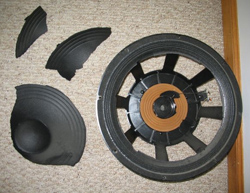Your worship leader has been knocked to the floor as his monitor wedge suddenly explodes with a huge volume increase. The church service ends and you’ve got 30 minutes until the next service to find the problem and fix it. Where do you start?
A very similar scenario happened to a friend of mine working in pro audio. Only it happened for four nights in a row until the problem was solved. And the primary reason it took so long to fix was that someone above him didn’t recognize the ways equipment can fail and thus denied his request for a swap of a particular piece of gear.
Equipment usually fails in these ways:
—Volume drop
—No volume / no signal
—Signal cuts in and out
—Decrease in sound quality
These failures are usually simple things like a short in a cable, a bad cable, or a blown piece of equipment like a power supply or internal electronics. There are also problems like a blown loudspeaker.
What about the boost in the monitor volume? No, my friend didn’t crank the gain or any such thing.
Let’s look at the signal path:
—Signal comes into the mixer from mics, instruments, and a computer
—Mixer possibly routes signal to effects units
—Mixer sends signal out to power amplifier
—Amplifier sends signal to monitor
Using this path, let’s look at the possible sources of a problem:
—Cables
—Input sources
—Mixer
—Power amplifier
—Monitor
Right off the bat, we can drop cables from our list of potential problem sources. Also, as all the input sources are boosted in the monitors, we can drop those off the list. It’s something after the signal gets to the mixer.
Now we’re down to:
—Mixer
—Amplifier
—Monitor
Monitors fail down. Blown power supply, blown speaker cone, blown fuse. Our list is getting shorter.
Where would you put your money between the mixer and the amplifier?
You’re going to say the amp…not because you think that’s going to be the source of the problem…but because you really don’t want the problem to be in the mixer. You’d have to get it serviced. Repair could be expensive. You’d have to borrow another mixer. “Denial ain’t the name of a river in Egypt.”
Truth be told, the amp is going to fail down as well.
Hate to break it to you…the mixer is busted. My friend knew this and wanted to swap mixers but the “higher up” continually denied that possibility and so forced him to try everything from cable replacement to monitor replacement until finally recognizing it was the mixer.
Summary
Stuff fails. You’re alerted to this failure by what you hear (or what you don’t hear). Knowing how equipment fails will help you diagnose the problem correctly and get the system back up and running as soon as possible.
Ready to learn and laugh? Chris Huff writes about the world of church audio at Behind The Mixer. He covers everything from audio fundamentals to dealing with musicians, and can even tell you the signs the sound guy is having a mental breakdown. To view the original article and to make comments, go here.





















